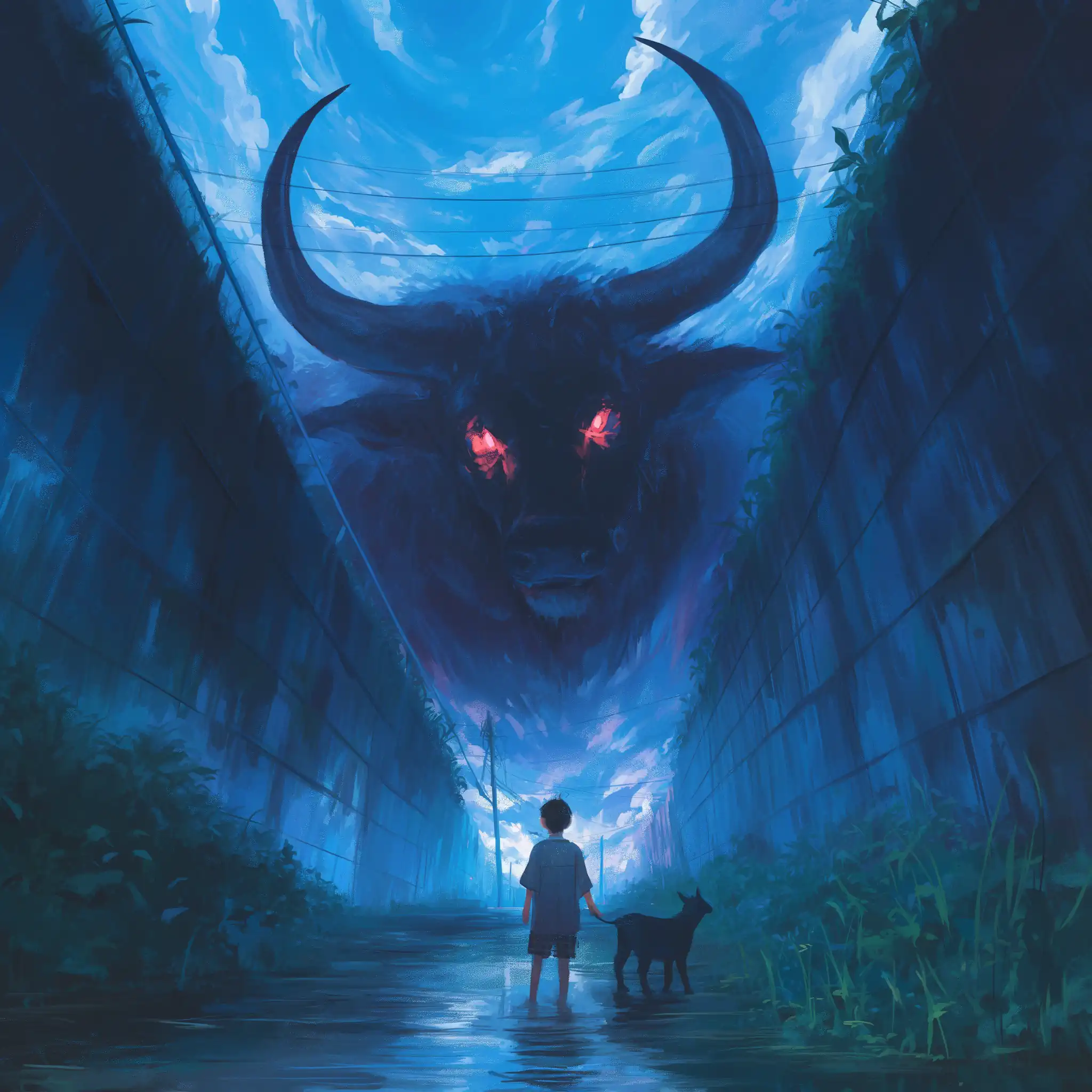LABYRINTH
You’re lucky I found you
in these lightless tunnels
where a monster lurks,
(or so I’m told).
I have strength enough
to keep us safe
while you tell stories
of your world
beyond these walls,
where men and cows
roam grassy fields
under broad blue skies,
free,
as I long to be!

Musings
I love mythology, and am looking forward to the Arisia conference in Cambridge, Massachusetts, this weekend where I'll be on a panel with fellow mythology lovers talking about "Mythology Revamped!"
My primary background is in Greek mythology, which is our source for the story of the Minotaur, a word that derives from "taur" meaning "bull," and "Minos" meaning "infamous Cretan king whose wife slept with a bull and gave birth to a humanoid longhorn monster."
Minotaur was not the name of a species, nor was it the proper name given to the half-calf son of Queen Pasiphaë. Minotaur was merely a slur by which he was mocked. His real name in the myth was Asterion, "the starry one," which to me implies a refined soul and poetic aspirations.
Because of his genetic makeup, Asterion was very strong and a bit of a wild child, so he couldn't just be sent to his room, but he also couldn't be allowed to appear in public, since his existence was perceived by the king as an insult and affront. King Minos's royal engineer solved the "problem" with an elaborate maze that served as the prison where Asterion grew up and spent his life, until he was betrayed by his half-sister, Ariadne, and killed by the Athenian hero, Theseus.
The Minotaur myth is a depressing tale of intolerance and betrayal when told from the monster's point of view, but it may encode an even greater tragedy. Our received story of Asterion likely references lost myths from a Minoan culture centered on Crete that worshiped a bull-themed sky deity. When the Minoan culture was conquered, the only surviving stories of the sky-bull came from the victors, whose version transformed the former god into a mockery to be buried, tortured, and killed.
More Tomorrow.


